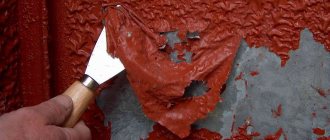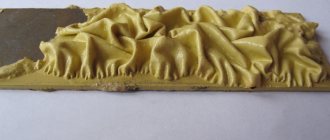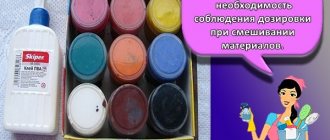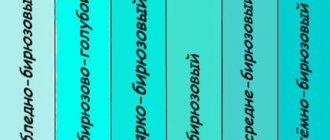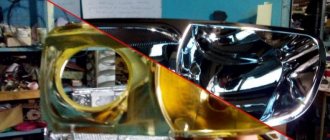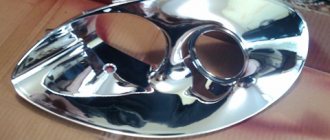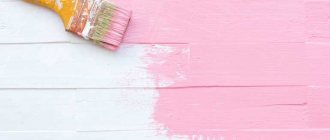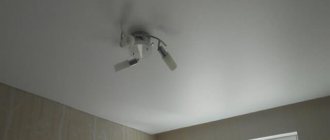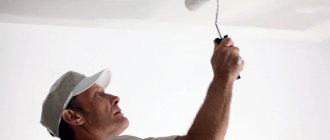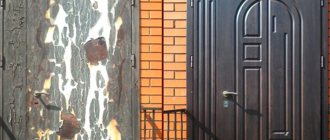What can you paint with gouache on?
You can paint with gouache on paper, cardboard, plywood, canvas or other surfaces. ... It is better to choose rough paper, then the paint will adhere more reliably to the surface and lie more evenly. On paper that is too smooth, gouache may crumble after drying, and during work it may lie unevenly or gather in “islands.”
Interesting materials:
What is the oxidation state of carbon in Ethylene? What is the college scholarship? Which side of the coin is heads? What is the relationship between metals and non-metals? What bond is formed between atoms with the same electronegativity? What is the strongest connection in Chemistry? What temperature should month-old chicks be at? What temperature should a chicken barn be? What temperature is considered a fever? What is the temperature of the outer core?
All ways to dilute if it's dry
Before “reanimating” the paint, you must carefully inspect the container. There should be no external damage or cracks, due to which the gouache could quickly deteriorate again.
Expert opinion
Zakharova Irina Yurievna
Cleaning professional with 15 years of experience. Our best expert.
Ask a Question
Attention! It is important to carefully inspect the lid and threads of the jar. If there are chips, uneven surfaces, stuck dirt or pieces of dried palette, they must be removed. Wash the cap and threads.
If the pigment has only thickened a little, you can try placing the container in a warm place - on a sunny windowsill or near a radiator, and wait a few hours.
See also
Technical characteristics and scope of application of ML-1110 enamel, how to apply
Using water
Gouache is a water-based dye. Plain water allows you to quickly dissolve the pigment without ruining it. How to make paint workable:
- inspect the container;
- pour water - the liquid level should slightly cover the dried pigment;
- close the lid tightly and leave for 24 hours at a temperature not below zero;
- If after the prescribed time the paint remains a little dry, the procedure must be repeated.
Water is used most often. This is an affordable, economical and environmentally friendly solvent that will not harm the pigment and will maintain brightness and other properties.
Attention! It is important not to pour too much liquid. If you overdo it, the layer will become light, transparent, and after drying it will begin to crack even on paper.
Water bath
An additional recovery method is a water bath. First, you should prepare a metal double boiler (combine two metal containers that differ in diameter), boiling water, and toothpicks. Instructions:
- Boiling water is poured into the jar, slightly above the level of the dried pigment;
- the container is placed in a saucepan of a smaller diameter, the second one of a larger diameter, filled with water, and the structure is placed on the fire (if the lids are placed in liquid, the old layer will come off);
- bring the water to a boil, reduce the heat to low - the liquid should bubble a little;
- cover the structure with a lid;
- water is added when necessary;
- After some time, use a toothpick to check the degree of dissolution of the liquid in the paint.
If the pigment is not too dry, you can make liquid paint in 20 minutes. If the composition can be tapped, it will take at least an hour. The main indicator is stirring with a toothpick until smooth.
Gouache
Gouache is dense and opaque. Once dry, it will be matte and velvety. It is perfect for paper, canvas, cardboard or smooth wood surfaces.
Unlike watercolors, gouache has less binder, but much more pigments. Due to this, you can cover up unsuccessful places, and you will be able to paint over even dark spots with a lighter one. The previous layers will not show through, the drawings will come out beautiful, bright and, most importantly, neat.
Store gouache in tightly closed containers at room temperature. Its from cooling below zero. If it so happens that for some reason they have dried out (gouache), what to do with them will be discussed below in the article.
Watercolor
Finally some good news: watercolor can be restored. Watercolor is 80% pigment and the remaining 20% is binder and glue.
If you used watercolor in tubes and it dried out, then simply cut the packaging and use the paint as regular watercolor in pans. But its plastic properties will be slightly worse.
So, if you want to completely restore plasticity, you need gum arabic for this.
Gum arabic is a binder in watercolors that dissolves easily in water and provides plasticity.
Take an empty jar (you can use one that has run out of gouache), stir the watercolor with water and a small amount of gum arabic. This way you will get the original consistency.
Remember to close the lid tightly to avoid drying out again.
Watercolor is also sold in cuvettes, where it is always in its usual solid state.
This form is more convenient to use, as it does not require restoration.
Want to learn more about watercolor techniques and painting techniques? I advise you to read this article.
What to do with dried gouache (using a water bath)
There is a second way to dilute gouache - a water bath. You need to prepare a metal steamer (it can be replaced with two containers of different diameters), toothpicks and boiling water. Step-by-step instructions for softening gouache look like this:
- into a jar with dried gouache you need to pour just boiled water, which will completely cover the paint;
- jars of paint are placed in a pan with a smaller diameter. Next, a larger diameter pan is filled halfway with water; a second pan with paints must be placed inside;
- the caps can also be placed in water so that the paint comes off from them;
- bring the water in the container to a boil and reduce the heat so that the liquid bubbles slightly;
- cover the container with a lid;
- the liquid will boil away, so hot water must be added as needed;
- Toothpicks are needed to check how much the paint has softened.
For paint that is not too dry, it will take no more than 20 minutes. If you don’t know what to do, if the gouache has dried to the point of knocking, then just simmer the jars for at least an hour, everything will work out. You need to wait until the gouache is stirred until smooth.
Knowing what to do when paint (gouache) has dried, you can save on buying new materials for creativity. During the dilution process, the paint acquires a liquid consistency and becomes usable again. You just need to remember to protect your hands and clothes, since gouache is difficult to wash off.
Gouache is a popular paint among painting enthusiasts; it has no strong odor, dries quickly and looks great in several layers. What to do if the gouache has dried out? Throw it away and buy a new one? You shouldn’t throw away jars of gouache, even if hard lumps have formed in them; the paints can be given a second life.
Acrylic and tempera
I am often asked: how to restore dried acrylic paint for painting?
Acrylic and tempera are water-soluble paints. But, despite this, they also cannot be returned to their original state. The fact is that they contain an emulsion, which, when dried, turns the paint insoluble.
So, if the acrylic paint has dried out, you need to go to the store for a new one.
How can you remove mold from paint?
Wipe the problem area with chlorine solution, let it sit for 5 minutes, then rinse. If the stains have disappeared, we are dealing with mold. Bleach should be used to remove all existing stains in the same way (it should be diluted at the rate of one part bleach to three parts water).
Interesting materials:
How to properly trim onions for winter storage? How to communicate with a girl correctly? What is the correct way to dress or wear it? How to properly put on a diaper for a newborn? How to format a play correctly? How to correctly formulate tasks in elementary school? Which is correct, about three hundred or three hundred? How to properly calibrate an accelerometer? How to open and close a laptop correctly? How to send a parcel in a package correctly?
Oil
In oil paints the binder is linseed oil. It is thanks to this component that paints harden to a stone state, after which they cannot be used.
This is why I recommend not squeezing a large amount of paint out of the tube.
Because then all the unused paint turns into solid masses that cannot be used in the future. And, by the way, they can only be cleaned with a hairdryer. But usually they just buy a new palette so as not to bother with dried material.
Cleaning dried oil is quite difficult.
If the paint has dried right in the tube, it cannot be used either. Although oil in tubes can be stored for many years, there is still a chance of hardening.
- For example, if the tube is not closed tightly.
- Or if there are cracks on the surface of the package, air also penetrates inside the package, causing the oil to harden.
How to restore dried oil paints?
Unfortunately, there can only be one piece of advice here: buy new tubes.
Gouache
Gouache is dense and opaque. Once dry, it will be matte and velvety. It is perfect for paper, canvas, cardboard or smooth wood surfaces.
Unlike watercolors, gouache has less binder, but much more pigments. Due to this, you can cover up unsuccessful places, and you will be able to paint over even dark spots with a lighter one. The previous layers will not show through, the drawings will come out beautiful, bright and, most importantly, neat.
Store gouache in tightly closed containers at room temperature. Its from cooling below zero. If it so happens that for some reason they have dried out (gouache), what to do with them will be discussed below in the article.
Dry cleaning
Acid cleaning will definitely help. Chemical methods for cleaning threads from rust differ from manual ones in that they are much more efficient and quick to solve the problem. However, to implement such measures you will have to acquire special means, and also remember about safety precautions. In addition, dry cleaning differs from manual cleaning in a wide variety of techniques.
Chemistry is the best option. Soaking parts in sulfuric acid with an inhibitor or zinc will help remove rust. After such soaking, you will still have to work with a brush, but you will have to scrub an order of magnitude less than with manual cleaning.
In addition, you can use such “old-fashioned” techniques as o, in a solution of glycerin, water and tooth powder, in a paste of soda and water. Potatoes and laundry soap (you need to rub the part with them), as well as fish oil and even a “porridge” made from flour and vinegar, cope well with rust.
We finish any cleaning by washing off the used composition or solution under running water.
Did you like the article? Subscribe to the channel to stay up to date with the most interesting materials
Prevention of drying out
Masters do not advise mixing shades inside a container - for this there is a special device called a palette. If it is not available, any smooth surface (plate, board, small tray, etc.) will do. Before starting work, each color is thoroughly mixed in its own jar, then some is transferred to the palette.
The gouache is not diluted too much; the consistency should resemble thick sour cream. Painting from jars is not recommended - in an open container the pigment dries faster and the paint can mix with other colors. It is important to collect containers after work, close each jar tightly, and check it.
Jars should not be placed in places where the temperature may be low (below zero). It is sufficient to store at room temperature. You can even use very old kits, including Soviet ones. The main thing is to constantly check the condition of the pigment, add a little water (preferably distilled) if necessary, and mix thoroughly until smooth.
Attention! Acrylic gouache cannot be diluted using these methods. The pigment has a special composition, which water will turn into a hard mass unsuitable for painting.
Thinning paint is not suitable for professional artists. Despite the simplicity of the technique, the pigment is diluted and slightly loses color saturation and other properties. These methods are suitable for amateur drawing or creativity with children.
Source
